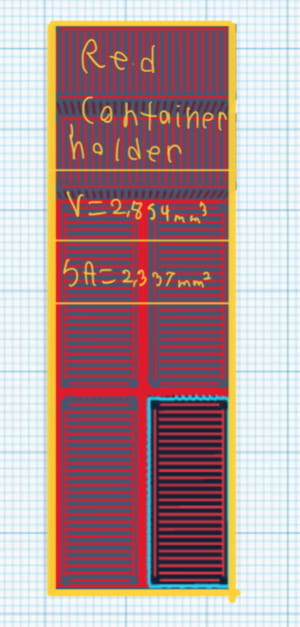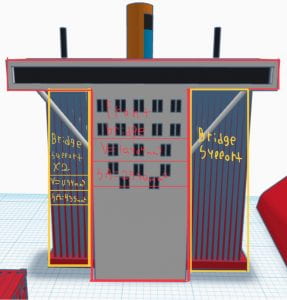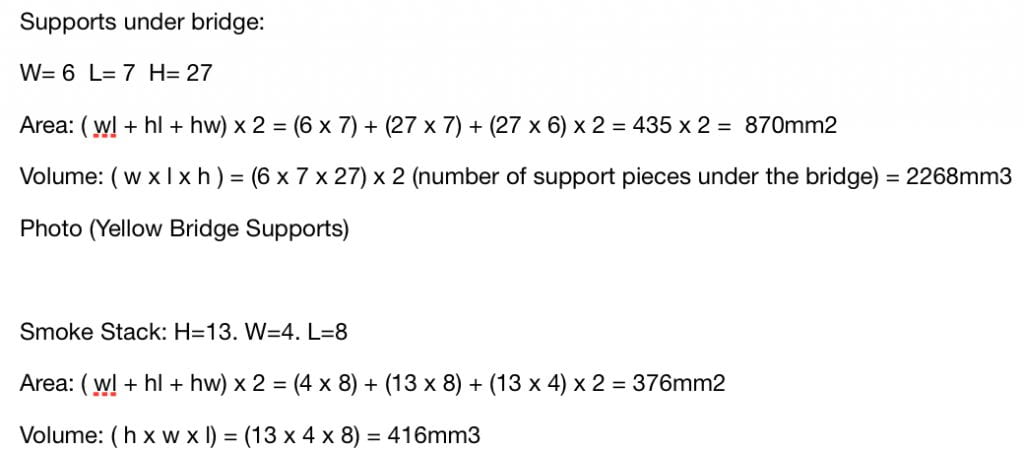https://www.vesselfinder.com/vessels/MADRID-MAERSK-IMO-9778791-MMSI-219836000
This blog post is for the Scimatics Ultimate Design Challenge. I worked on this project with Sylas & Santiago. The Ultimate Design Challenge (UGC) was a project where we had to collaboratively create a 3D model of something in Tinkercad in which we chose a container ship, it had to be made of at least 10 individual 3D shapes and be built for maximum surface area or volume. We chose volume for the reason that containers are made to contain things, so to have less volume would be ineffective.
Normally the driving question would be revealed at the end of a blog post, but in this project the driving question was “how can we design ____ for maximum volume/surface area?”. So given what I’ve just told you, our driving question was ‘how can we design a container ship for maximum volume’.
Before we get into photos, milestones & competencies I’m going to quickly explain what I’ve learnt surface area and what volume are:
Surface area is the measurement for the surface of an object. For example, if a cube was 8cm high, long, & wide. We would use a mathematical formula to figure out what it’s surface area (SA) is. (H x L) + (H x W) + (W x L) x 2 = (8 x 8) + (8 x 8) + (8 x 8) x 2 = 384cm2.
Volume (V) is the amount of space an object takes up. Let’s use the same example. The formula we would use is different but much easier: W x H x L = 8 x 8 x 8 = 512cm3. Making the cubes SA 384cm2 & the V 512cm3.
The first Milestone was deciding what object we were going to make. But before we could decide on an idea Sylas made an entire model based on the Maersk ship you saw above.
This is what our model looked like in Tinkercad:

Milestone 2 was all about learning how to use different formulas, what shapes they apply too, so we make a list of what formulas we need to calculate the SA & V of our ship. We need both SA & V so we could make a ratio and prove our container ship was built for volume. These were the formulas we ended up using:
Milestone 3 was using those formulas in Milestone 2 to calculate our container ship. The ship in question actually had multiple parts, the boat hull, the storage hull, the bridge, the rear piece of the bridge, the smoke stack, the containers, & the container floor. We calculated those separately, then when it came time to put the pieces together I calculated all the surface area we could lose when putting the pieces together then removed that number from the total SA. Here are some of the calculations:
Milestone 4 was just to get the 3D model printed so we could present it for milestone 5, the presentations. However we could not get our model 3D printed unfortunately.
Milestone 5 was presenting our work to the class with a keynote.
It’s the milestone that revolved the most around representing & communicating our ideas, process, formulas & end result. This milestone was one of the harder ones since our work throughout this project was a little backwards. It definitely could have been smoother & easier to understand. I could have done that if I took time to think “if I read this would I understand it” & go from there in terms of presenting.
I do think I used my time in class pretty well to help create our end result. Doing the calculations is what I spent most of my time doing since they were pretty confusing for a while. My group helped me when I got off task & I did the same for them.
This project had us reasoning when making our decisions & analyze what was happening & what need to be done. “Does this have at least ten shapes” “has this been designed for maximum volume” were pretty constant in my mind. Our model wasn’t built collaboratively which was one of the main requirements, which in hindsight could have been avoided by me & Santiago making something extra for the model.
Earlier in the post I said we needed a final ratio to find out if we succeeded in getting higher volume. So here is our ratio with the calculations:
Now to answer the driving question our group made! “How can we create a container ship for maximum volume”.
Well if volume is the amount of space an object takes up, why not more objects? That’s what we did. But you might be thinking “how did the surface area not overflow by adding more objects” which is something I was worried about at first. But once I realized that all the pieces were separate, when you put them together it’s going to lose a lot of SA. Also, V will typically always be higher than SA as long as the model isn’t too big, so all we did was keep our model under that threshold.
That brings this blog post & project to a close. It was pretty interesting to do & watch all the other presentation, I highly recommend you other peoples blog posts on this project. We’re getting pretty close to the end of the school year so this will be one of the last blog posts of grade 8.






